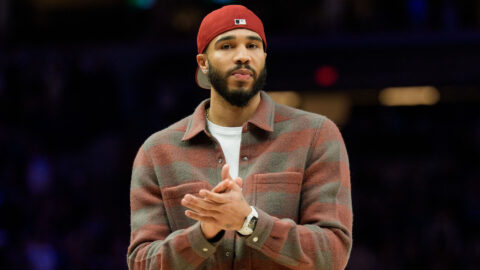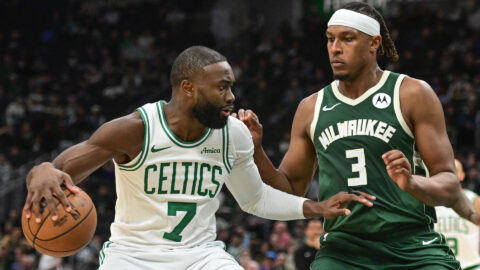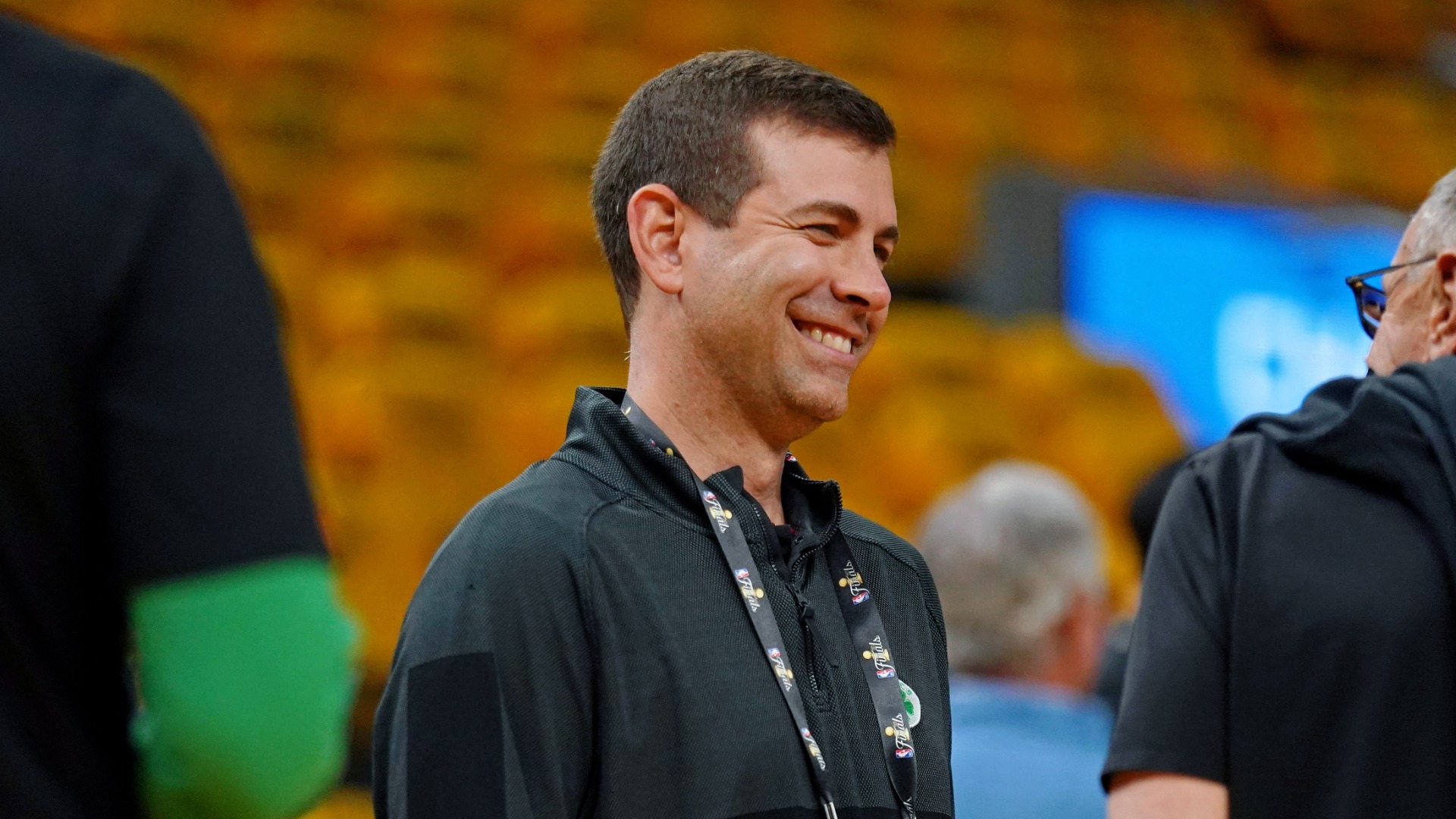There once was a golfer named Tiger Woods.
Allegedly, Tiger did something bad involving nightclub hostesses, VH-1 reality show contestants, and a supposed laundry list of other women who are not his wife. Thanks to the National Enquirer and Us Weekly, the whole world found out, and the once squeaky-clean golfer found himself enmeshed in a bit of a crisis PR campaign.
Will Tiger’s once-pristine image ever be restored to its former PGA champion, Gillette razor-hawking glory?
There is hope.
It turns out there are plenty of once-revered athletes who have trashed their reputations with various dalliances in illegal (or immoral) activity. Now, they have completed the restoration process and are once again bathed in the golden light of public adoration. Their past indiscretions are all but forgotten.
Keep your head up, Tiger. Someday soon, this will blow over. Until then, here are the top 10 former Tigers who have risen from the ashes to restore their destroyed reputations.
10. Vince Young
The Texas prodigy quarterbacked the Longhorns to a huge upset victory over USC in the 2006 Rose Bowl. At that point, the Trojans had not lost a game since 2003 — yes, 2003 — but their winning streak was halted at 34, thanks to a ridiculous performance by Young, who rushed for 200 yards and three touchdowns and threw for another 267 yards in a 41-38 victory.
That spring, the Titans drafted Young with the third overall pick in the 2006 draft. In each of his first two seasons, he started 13 and 15 games, respectively, and led Tennessee to winning records. Then, in 2008, Young injured his knee in the first game of the season, and coach Jeff Fisher decided to go with Kerry Collins at quarterback for the remainder of the year.
After injuring his knee, Young left home, sans cell phone, and allegedly disappeared for about a day. Fisher called the police, who found Young after a four-hour search. His agent insisted the story got blown out of proportion, but ensuing media reports indicated that Young was depressed and had mentioned suicide in several meetings with a therapist. Even Young’s mother said her son was “hurting inside and out.” Young did not start another game that season.
This year, Young reclaimed the starting job when the Titans fell to 0-6, and he went 5-0 until the Titans ran into the undefeated Colts.
9. Rasheed Wallace
There is nothing Boston likes more than rough-around-the-edges types who redeem themselves in Beantown. Enter Rasheed Wallace, a former Piston widely viewed as a loose cannon who talked too much trash, took too many technical fouls and flew off the handle far too easily. The talent was there — Wallace is a critical defensive asset who has averaged 14.9 points and 6.9 rebounds per game throughout his 15-year NBA career — but he didn’t seem to have the composure to reach his full potential. He always had the passion and intensity to lead his team, but often, that same passion and intensity got him kicked off his own court. He’s never been one to take a deep breath after receiving a foul, and he’s never been one to keep his opinions about referees a secret (see: 2008 NBA playoffs against Celtics).
Now, Sheed is in Boston, leading what has proven to be one of the best second units in the NBA. Sure, he still has a temper, but it’s never too late to learn how to keep it in check. As a critical component of a star-filled squad that features Paul Pierce, Ray Allen and Kevin Garnett, Wallace is currently averaging 9.2 points and 3.9 rebounds in 20.7 minutes per game off Boston’s bench. He’s won a championship as a starter in Detroit, and now he only needs one more thing to permanently switch his reputation from a whiner to a winner: Banner No. 18.
8. Ron Artest
The Ron Artest who stepped onto the floor of the Palace at Auburn Hills on Nov. 19, 2004, was never the same Ron Artest who headed to the locker room once the night was over. On that night, as the Pacers faced the Pistons, Artest was involved in an infamous brawl with Detroit fans that led to a 73-game suspension and the end of his career in Indiana. Citing rifts with his teammates, Artest demanded a trade and was shipped off to Sacramento, then to Houston. Someone who was once a star became a notorious clubhouse cancer.
Then, this summer, Artest signed a five-year deal with the world champion Lakers, and for the first time since pre-2004, he seems to be focused on the most important thing: winning. (If you can ignore the whole Hennessy-at-halftime saga.) Artest is averaging 12.4 points, 4.8 rebounds and 4.0 assists in 34 minutes per game on one of the best teams in the NBA. Maybe all he needed all along was a little bit of Phil Jackson‘s Zen influence.
7. Allen Iverson
Speaking of former NBA stars seeking redemption, Allen Iverson earned a new lease on NBA life last week, when he signed a one-year deal with the 76ers, the team that cultivated him into a legend. Iverson was drafted by Philadelphia with the first overall pick in the 1996 draft and led the Sixers to the playoffs six times in his 10 full seasons with the team.
Then, beginning in 2006, his relationship with head coach Larry Brown turned sour. Iverson began blowing off mandatory functions and practices, and everything came to a head in December, when he skipped a pregame practice and was told to stay away from the team until he could be traded.
On Dec. 19, 2006, Iverson was shipped to Denver.
In 2008, he bounced to Detroit, and he missed the last month of the season with an alleged back problem, although it is unclear whether he was injured or whether he was just being benched.
Iverson signed a one-year deal with Memphis prior to the 2009-10 season, but once he figured out he was going to serve as a bench player, he changed his tune. He left the team in November due to personal reasons, and his contract was terminated a week later.
Iverson contemplated retirement for a couple weeks, and his decision to hang up his sneakers seemed imminent — until the 76ers swooped in once again to offer him a one-year deal to return to Philadelphia. Now, Iverson has the chance to finish his career where he started it — and re-establish his legacy in the city that made him.
6. Alex Rodriguez
This is as hard for me to write as it is for you to read, but it’s true: All of those images of Alex Rodriguez slapping Bronson Arroyo during the 2004 ALCS are obsolete. The 2009 season was when the embattled superstar finally shed his reputation as a cheater, a playoff flop, a waste of money, a whiner and a centaur (oh, whoops, that one’s still true). Alex Rodriguez finally won a World Series. Now, we all have to lay off a bit.
Since the day he came to New York in 2004, Rodriguez struggled to earn his pinstripes. He didn’t seem to get along with his teammates, he got too caught up in the celebrity culture in New York City, and he couldn’t hit the ball in October to save his life. His baserunning gaffe against Boston in 2004 is widely viewed as the moment that doomed the Yankees’ championship dreams. In the four years that followed, A-Rod fell out of favor with Yankees fans. He embarrassed himself by having affairs with Toronto strippers and Madonna. He got divorced, and, oh yeah, he did steroids.
Then, in 2009, Mark Teixeira came to town and took the pressure off him. Boom. A-Rod returned from a hip injury — an injury that had the potential to keep him out of action for the majority of the 2009 season — and hit .286 with 30 homers and 100 RBIs in 124 games for the best team in baseball. In 15 games in October, he hit .378 with six homers and 18 RBIs to lead New York to its first World Series since 2000. That ring kind of makes up for all the dumb stuff he’s done in the past six years, doesn’t it?
5. Ricky Williams
Coming out of Texas in 1999, Ricky Williams was supposed to be one of the greatest running backs in the history of football. He was selected by New Orleans with the fifth pick in the draft, but he didn’t really break out until he was traded to the Dolphins in 2002. That year, he led the NFL in rushing with 1,853 yards and earned a trip to his first Pro Bowl. Then, very quickly, everything went wrong.
In 2004, Williams tested positive for marijuana and faced a hefty fine, but instead of serving a four-game suspension, he opted to retire from football at the age of 27 in order to “discover himself.” Later, he was diagnosed with clinical depression and social anxiety disorder.
Williams opted to return to football in 2005, and after serving his four-game suspension, he apologized for ditching the team before training camp in 2004 and took some of the responsibility for the Dolphins’ 4-12 record during his absence.
But the trouble wasn’t over yet. Williams violated the league’s drug policy for the fourth time in 2006 and was suspended for the entire season. That year, Williams played in the CFL and became the league’s highest-paid running back (but something tells me things in the CFL just aren’t as exciting as the NFL).
Finally, in 2007, Williams was reinstated to the NFL and has stayed out of trouble since. This year, Williams is on pace to have one of the best years of his career, rushing for 867 yards, nine touchdowns and 5.0 yards per rush, a career high. And now that Ronnie Brown is out for the year, Williams really has a chance to re-establish himself as the Dolphins’ premiere workhorse.
4. Michael Vick
When Michael Vick’s NFL career began, he was one of the most versatile quarterbacks in the league, and his three Pro Bowl appearances in his first five years in the league proved it. The No. 1 pick in the 2001 draft was the face of a desperate Falcons franchise (and the face of Nike, EA Sports, Powerade and Coca-Cola, among others) until he got caught running a dogfighting ring out of one of his homes in Virginia.
In 2007, Vick was convicted of federal dogfighting charges. He faced an indefinite suspension from the league and was later sentenced to 23 months in federal prison. He was forced to file for bankruptcy in July of 2008.
Since getting out of prison in May of 2009 — after serving 19 months of his sentence — Vick has done everything right. He served the final four months of his sentence in home confinement, took a $10 per hour construction job, applied for reinstatement to the NFL and was given a second chance by the Philadelphia Eagles. He returned to the field in October and has been used in a limited role, but he hasn’t said a peep about it. Vick is just happy to be back on a football field again instead of behind bars.
On Sunday, Vick returned to Atlanta for the first time since leaving in disgrace and accounted for two touchdowns in the Eagles’ 34-7 victory. Now that’s coming full circle.
3. Brett Favre
There have been plenty of athletes who have fallen by the wayside because of drugs. Not Brett Favre. Rarely is there an athlete as renowned as Favre who is almost derailed because of a painkiller addiction and it’s not the first thing people think about when they hear his name. When people hear Brett Favre, they think about a future Hall of Famer, a 10-time Pro Bowler, a three-time NFL MVP and a Super Bowl champion (yes, those in New England definitely remember that). They don’t think about somebody who was forced into a 10-part drug addiction treatment program, per orders of the NFL. They don’t think about someone who relied on painkillers to get through every game he played.
True, Favre may be a bit of a drama queen. That whole retiring/un-retiring act may be getting old. But find another quarterback who’s been through what he’s been through and is still managing to lead a young Minnesota team to a 10-2 record in his 19th professional season.
2. Kobe Bryant
Did he or didn’t he? We still don’t really know. When the young Lakers superstar was accused of rape in the summer of 2003, nobody wanted to believe it because he was Kobe Bryant. He was perhaps the most exciting, most explosive player in the game since Michael Jordan. That summer, he was a 24-year-old superstar coming off a season in which he averaged 25.2 points per game, who won three consecutive championships alongside Shaquille O’Neal from 2000 to 2002. Then, his image was scarred by allegations that he raped a 19-year-old hotel employee while staying in Eagle, Colo.
The case was dropped in September of 2004, but Bryant’s reputation had already suffered: He lost endorsements with McDonald’s and Nutella, sales for his jersey dropped, and he was no longer the golden boy of the NBA. Around the league, he was suddenly seen as cocky, contentious and difficult to coach.
Bryant’s road was a rocky one all the way up until the summer of 2007, when he expressed the desire to be traded from the Lakers, the only team he’d ever played for. Three hours later, Bryant backtracked after a conversation with head coach Phil Jackson, and he never looked back.
Bryant led the Lakers to the NBA finals in 2008 (where, of course, they fell to the Celtics), but in 2008-09, Bryant got the ring he so desperately wanted, to prove he was still capable of getting one without Shaq. And there’s nothing like a championship to make everyone forget about all the bad stuff you’ve done.
1. Randy Moss
Imagine what the Patriots would be without Randy Moss.
Imagine thinking that seven years ago.
Moss’ career controversy began very, very early on, when he was slated to play for Lou Holtz at Notre Dame. A high school fight that landed one kid in the hospital robbed Moss of his scholarship — but Florida State’s Bobby Bowden was next in line for his services. During his freshman season at FSU, Moss tested positive for marijuana use while he was serving a 30-day jail sentence stemming from the fight, and that was the end of his career as a Seminole. Moss finally found some longevity at Marshall University, where he set a multitude of records, including the most games with a touchdown catch in a season and the most touchdown passes caught in a season (he tied Jerry Rice‘s record of 28).
The troubles didn’t stop for Moss once he hit the NFL. After he slipped to the No. 21 pick in the draft because his legal troubles scared off too many teams in the league, his career was marred by a series of embarrassing situations that solidified his reputation as a cancer, a loose cannon. His numbers were always exciting, but his antics always made the headlines first: There was the time he mooned a national TV camera while playing for the Vikings, there was the time he admitted using marijuana while a member of the Raiders, and there was always speculation that he quit on his teams, whether it was because he wasn’t getting enough touches or whether it was because the team just wasn’t winning and he got sick of trying.
April 29, 2007 was a very fateful day. That was the day the Raiders sent Moss to New England for the hefty price of a fourth-round selection in that year’s NFL draft.
In 2007, Tom Brady and Randy Moss became the most feared connection in the league. Moss helped Brady throw a record 50 touchdown passes, and Moss finished the year with a career-best 23 touchdowns (which also tied a Rice record) and 1,493 yards. But Moss’ biggest test came in 2008, when Brady went down with a knee injury and he was forced to work with rookie Matt Cassel. Moss had a reputation of quitting on inexperienced quarterbacks, but he never did with Cassel. The Vikings/Raiders version of Randy Moss is dead, and he didn’t even need a ring to make it happen. (Of course, nobody’s saying a ring wouldn’t be nice.)
Stay tuned for next year’s top 10, featuring Sean Avery, Diana Taurasi, Plaxico Burress and more.



